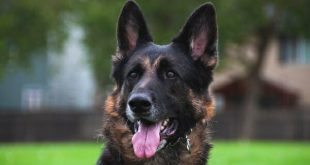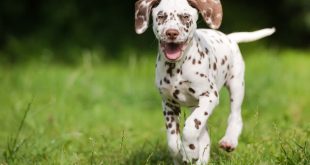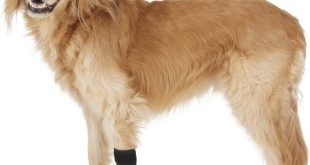Dogs are great companions; however, they can carry disease-causing pests which can harm not only them but also humans. Bringing your new baby home, can be exciting, overwhelming, and upsetting for your dog, especially if he did not spend time with children as a puppy.
How to Prepare Your Dog For Your Baby’s Arrival
1. Gradually Decrease the Amount of Time You Spend With Your Dog
Before your baby comes, start decreasing the amount of time that you spend with your dog. This is important so that your dog becomes used to the change and accepting of the change of your routine. The gradual change in your dog’s lifestyle will lessen his anxiety as his daily life alters.
2. Practice Good Verbal Control of Your Dog
It is important that you have good verbal control of your dog. This will help you control your dog’s movements and interactions with your baby. Make sure to always be present when your dog and baby are in the same room. You have to be sure to give your baby the proper amount of attention in order to ensure that it is safe around the dog. Dogs can become easily excited by sudden movements so always be careful when your baby is around your dog. Avoid face to face touching between your baby and dog. Dogs’ mouths have lots of germs and bacteria.
3. Use Child Safety Gates
Use child safety gates to separate your dog and baby as needed. You might even decide to make your baby’s room off-limits to your dog. If you choose to keep your dog out of your baby’s room, before your baby comes train your dog to wait outside the baby’s room. You can teach your dog to sit, stay, or lay down by the door.
When you are not training your dog, keep the baby room door shut or place a tall baby gate in the doorway, so that your dog understands that it is a restricted space. However, if your dog will have access to the baby’s room, train him to settle and stay in a space far away from the baby’s bed. If you are unable to train your dog to stay, you can use a leash attached to a heavy piece of furniture to remind him to stay in his own bed.
It is critical to keep your dog away from your baby’s equipment and bed, so that they do not get any germs on them. It can be difficult for dogs to tell the difference between their own toys and baby toys. Make sure to teach your babies not to touch your dog’s food, toys, bowls, and other doggy care items. Dogs can spread infections to humans.
Dogs, Diseases and Your Baby
Owners should be aware that dogs can carry certain disease-causing bacteria, viruses, parasites, and fungi that make people sick. Diseases can be spread from dogs to humans when humans are bitten, scratched, or come into contact with animal saliva, waste, and dander. It is important to protect your baby’s health from animal-borne diseases because their immune systems are weak and still developing.
What the Research Data Suggest
Reduces your Child’s Chances of Developing Allergies
However, research shows that living with a pet during the first year of a baby’s life can reduce the chance of your baby developing an allergy later in his life. In fact, babies tend to be healthier when they live in homes with dogs. Many babies who are raised in homes with dogs tend to have fewer colds, fewer ear infections, and need fewer antibiotics in the first year of life than babies who are raised in dog-free homes.
Child May Have Fewer Respiratory Issues Later in Life
Children in homes with dogs are reported to have had fewer respiratory tract symptoms or infections than children raised in pet-free homes. One theory that explains why dogs can help your baby’s health is that children’s immune systems develop best when infants are exposed to the right amount and right kinds of bacteria and viruses. If an infant is exposed to too many germs or lives in a sterile, germ-free home, his immune system will mature poorly.
Another theory is that early-life exposure to varieties of microbes lets them mix with the microbes in the guts of children and helps them keep the immune system from attacking itself and causing autoimmune diseases or allergies. In addition to reducing the risk of your child developing allergies, being raised in a home with a dog in the first few months of your baby’s life lowers your baby’s chances of developing obesity. Dogs provide protective health benefits to babies. Keeping a dog around your baby is safe and healthy.
How Infectious Can a Dog Be?
Although they are fantastic, loyal companions, dogs can spread infections to humans. Dogs can carry certain disease-causing bacteria, viruses, parasites, and fungi. Diseases can be spread from dogs to humans when humans are bitten or scratched, or come into contact with dog saliva, waste, and dander. In order to look after your dog’s health and your own health, it is critical that you stay informed on the most common infectious diseases that dogs spread to humans.
Most Common Infections that Can be Passed From your Dog to You
Campylobacteriosis
A common disease associated with dogs that can cause human illness is Campylobacteriosis. Campylobacter spreads through contaminated food or water and contact with the waste of infected animals. Humans usually get the infection by consuming contaminated raw milk or undercooked poultry. Dogs tend to acquire the infection by coming into contact with infected feces or infected food or water. When dogs have the infection they might show no symptoms of illness.
Symptoms and How to Prevent it From Spreading
However, some dogs have diarrhea and a slight fever when they are infected with campylobacteriosis. On the other hand, humans who become sick with Campylobacteriosis become ill within two to five days of exposure to the bacteria. Humans will have diarrhea, cramping, fever, and abdominal pain. Many of the bacteria that cause Campylobacteriosis are resistant to antibiotics.
If your dog becomes infected with Campylobacter, to prevent the spread of the infection wash your dog’s bedding frequently and regularly remove his feces from your yard. It is critical that you thoroughly wash your hands after coming into contact with an infected dog. Discourage the dog with Campylobacter from licking people’s face. This disease can be life threatening in babies, the elderly, and people with weakened immune systems.
Dog Tapeworm
Another illness that dogs can spread to humans is dog tapeworm. The dog tapeworm is a parasite that dogs get from ingesting fleas infected with tapeworm. Although the parasite is common, it rarely causes illness in dogs and humans. Humans become infected with the disease when they swallow a flea infected with tapeworm larvae. A sign of the infection is rice-like segments of the tapeworm near the anus or in fresh feces. Children are more likely than adults to become infected with dog tapeworm; however, they usually do not show any signs of being infected with the disease. In order to prevent infection, people must control the flea population in their environment and prevent or eliminate flea infestations. However, the infection is easily treatable in humans and animals.
Rabies
Humans are able to get rabies from dogs. Rabies is a deadly neurological disease which is caused by a virus. The rabies virus attacks the nervous system and causes disease in the brain. Humans and animals usually become infected through bites by rabid animals. If you suspect that you were bitten by a rabid dog, it is imperative that you get medical attention immediately. In dogs the symptoms are sudden behavioral changes and progressive paralysis. In people the symptoms start within days to months after exposure.
Symptoms
Symptoms include weakness, fever, and headache. Once symptoms of rabies appear, such as confusion, anxiety, and delirium, it is often too late to be cured. Usually death occurs within days of the emergence of symptoms.
Lyme Disease
Lyme disease is a bacterial disease that ticks transmit to people and animals. Dogs infected with Lyme disease can have various symptoms such as loss of appetite, painful joints, lack of energy, and enlarged lymph nodes. Humans will usually develop a rash at the site of the tick bite and flu-like symptoms. People infected with Lyme disease will usually have a red bull’s eye at the site of the tick bite. Lyme disease can be fatal, so it is important to seek medical help if you think that you or your dog may be infected.
Methicillin-Resistant Staphylococcus Aureus
Methicillin-resistant Staphylococcus aureus (MRSA) is the bacteria that has become resistant to some antibiotics. Dogs can usually have MRSA and not be sick; however, humans can become fatally ill with the infection. MRSA is transmitted from a dog to a human through direct contact. In most people MRSA causes skin infections, which range from mild to severe. However, if MRSA is left untreated, it can spread to the bloodstream or lungs and cause life-threatening disease.
Regular Checkups at the Vet
Many different diseases are associated with dogs. The illnesses show a variety of symptoms and can cause several different health problems. In order to prevent the spread of infection it is important that your dog receives routine veterinary care. Additionally, always wash your hands with soap and water after contact with dogs, dog saliva, and dog waste. Always clean up after your dog to decrease the risk of spreading disease to other animals and people. Avoid being bitten and scratched by dogs, especially by unfamiliar dogs. When you properly care for your dog, you will limit your and your family’s chances of becoming infected by diseases from your dog.
Top 5 Dangerous Dog Breeds
The most dangerous dogs are the ones that have a high chance of causing injuries to humans. Although genetics and environment shape the temperament of a dog, the five dog breeds listed are those that reports show are the most dangerous. These dogs with their strong jaws and aggressive nature have the ability to cause great damage if they attack humans or other animals.
Fila Brasileiro
The Fila Brasileiro, a Mastiff breed from Brazil, is one of the most dangerous dog breeds. They can be very aggressive to strangers. The breed was developed in order to work on large plantations and ranches in Brazil. The dogs were bred to be very aggressive. It is believed that the breed evolved from the Mastiff, the Bulldog, and the Bloodhound. Fila Brasileiros are known to be fierce guard dogs.
The Fila Brasileiro was created to guard against thieves, to help wrangle cattle, to hunt runaway slaves, and to protect the livestock from predators, such as jaguars. During the time of slavery, Fila Brasileiros were known to track and cling to slaves. After slavery was abolished in Brazil, the Fila Brasileiro was bred to be used as a watchdog and to track large game. They tend to dislike being touched by people outside of their family. Additionally, they are very large and heavy. Fila Brasileiros can be very destructive and even deadly.
Dogue De Bordeaux
The Dogue De Bordeaux, also known as the French Mastiff, Bordeaux dog, or DDB, is one of the riskiest and most dangerous dog breeds to have. The Dogue De Bordeaux is related to the Mastiff, the Bullmastiff, and the Neapolitan Mastiff. The dog breed, the Dogue De Bordeaux, is thought to have existed in France for at least six hundred years. The breed would guard estates and hunt game.
However, since they were associated with the aristocracy, after the French Revolution many were killed. However, some became butchers’ dogs or farm dogs. The Dogue De Bordeaux can be guard dogs. The breed is a confrontational and stubborn type dog who is protective of owners. The Dogue De Bordeaux should under no circumstances be left alone with a child. These are tough dogs who are aggressive to both humans and animals. Although they do not usually start fights, they are known to finish them.
American Pit Bull Terrier
The American Pit Bull Terrier is a combative dog breed. They are even prohibited in some places. The Pit Bull Terrier was created by breeding Old English Terriers and Old English Bulldogs together. The Old English Terriers and Bulldogs originated in England, but they eventually came to the United States where they became the direct ancestors of the American Pitbull Terrier.
Their aggression is often directed at humans as opposed to other animals. Pit bulls are known to be able to maul people. Some owners even train them to be able to kill and viciously attack others. The pit bull’s bite technique is the “hold and shake.” This deadly biting style makes their bites extremely dangerous and vicious. Pit bulls have a high pain tolerance, so fighting them off during attacks can be very difficult. Additionally, their stubbornness makes them dangerous.
Rottweilers
The Rottweiler is one of the most dangerous and deadliest dog breeds. Rottweilers, which descend from the Molossus which is a type of Mastiff, have been bred to offer protection as guard dogs. In Germany before rail transport, Rottweilers drove the cattle for butchering. Cattlemen would put their purses around the necks of their Rottweilers in order to protect their money from thieves after selling their livestock.
Additionally, Rottweilers would pull carts full of meat. They are very protective of their families. They can be very vicious and have been involved in several human attacks. Furthermore, Rottweilers have a very muscular and strong body. The combination of the Rottweiler’s personality and build can cause life threatening attacks of humans.
German Shepherd
German Shepherds are an extremely dangerous dog breed. The dogs can be territorial, aggressive, and protective. The breed originated in Germany. The German Shepherd was created in the nineteenth century, mainly by Captain Max von Stephanitz who wanted to create a dog that could be used for both police and military work. Naturally German Shepherds are protectors and herders. German Shepherds are known to be able to carry out practically every dog job. They are very suspicious of strangers. German Shepherds can brutally attack people.
Just because a dog is a member of one of these breeds, it does not mean that he is inherently dangerous. Different factors contribute to the risks that certain dogs pose, such as training and experiences with owners. A properly trained dog regardless of breed can be a great companion. The training of a dog is a lifelong commitment. With proper socialization a dog can be trusting and kind.
 Total Pooch Dog Supplements, Tear Stain Removers, De-wormers, Tylosin for Dogs and other great products.
Total Pooch Dog Supplements, Tear Stain Removers, De-wormers, Tylosin for Dogs and other great products.



